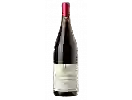
Winery Barton & GuestierCuvée Réservée Rosé
This wine generally goes well with beef, lamb or mature and hard cheese.
Food and wine pairings with Cuvée Réservée Rosé
Pairings that work perfectly with Cuvée Réservée Rosé
Original food and wine pairings with Cuvée Réservée Rosé
The Cuvée Réservée Rosé of Winery Barton & Guestier matches generally quite well with dishes of beef, lamb or spicy food such as recipes of feijoada ( portuguese cassoulet ), couscous of meat and fish or chicken pie.
Details and technical informations about Winery Barton & Guestier's Cuvée Réservée Rosé.
Discover the grape variety: Ribier noir
Most certainly originating from the department of Ardeche, more precisely from the region between Aubenas, Privas, Saint Péray, ... . It could also be found in the Galaure valley in the Drôme department as well as in Isère. It is said to be the mother of the raisin, another Ardèche grape variety. Today, Ribier is no longer planted, which means it is almost certain to disappear. It should not be confused with Alphonse Lavallée, which is synonymous with ribier, with marocain or ribier du Maroc, ... .
Last vintages of this wine
The best vintages of Cuvée Réservée Rosé from Winery Barton & Guestier are 2013, 2012
Informations about the Winery Barton & Guestier
The Winery Barton & Guestier is one of of the world's great estates. It offers 146 wines for sale in the of Loire Valley to come and discover on site or to buy online.
The wine region of Loire Valley
The Loire Valley is a key wine region in western France. It follows the course of the Loire River on its Long journey through the heart of France, from the inland hills of the Auvergne to the plains of the French Atlantic coast near Nantes (Muscadet country). Important in terms of quantity and quality, the region produces large quantities (about 4 million h/l each year) of everyday wines, as well as some of France's greatest wines. Diversity is another of the region's major assets; the styles of wine produced here range from the light, tangy Muscadet to the Sweet, honeyed Bonnezeaux, the Sparkling whites of Vouvray and the juicy, Tannic reds of Chinon and Saumur.
The word of the wine: Passerillage
Concentration of the grape by drying out, under the influence of wind or sun, as opposed to botrytisation, which is the concentration obtained by the development of the "noble rot" for which Botrytis cinerea is responsible. The word is mainly used for sweet wines.














